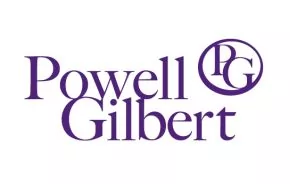Many enterprises consider one or more shades to be distinctive of their brand and deserving of protection against use by competitors. However, it has not proved easy to obtain such protection under trade mark law. Although it is in theory possible to trade mark a colour or combination of colours, there is still little guidance regarding the requirements for valid colour marks. Recent cases emphasise the particular difficulties in representing such marks sufficiently precisely.
Barriers to registration
Colour marks must overcome two main hurdles: (1) the colour(s) must have acquired distinctiveness, and (2) the mark must be satisfactorily represented in the application for registration.
(1) Distinctiveness: Colour is generally seen as a decorative property of goods, rather than a sign which conveys a message to consumers as to the origin of a product. Therefore, in order to be registrable, a colour mark must have become distinctive of a particular brand through extensive use.
(2) Representation: All colour marks must satisfy the Libertel test which requires that the precise shade of colour for which registration is sought should be identified through an internationally recognised identification system such as Pantone. Combinations of colours must additionally be arranged systematically in a predetermined and uniform way (Heidelberger Bauchchemie). With the aim of providing more flexibility to register “non-traditional” trade marks such as sounds and smells, the recent EU trade mark reforms have removed the requirement for “graphical representation” of a trade mark. However, in the absence of any specific guidelines as to how to register such marks, it is not clear what exactly constitutes sufficient representation under the new legal regime. Recent case law suggests that the 7 Sieckmann criteria – requiring a mark to be clear, precise, self-contained, easily accessible, intelligible, durable and objective – remain the touchstone in determining the validity of a colour mark.
Colour marks in the Courts
Recognising that colours can significantly improve brand recognition, brand owners are increasingly turning to non-conventional colour marks to protect the colours associated with their brands. These marks are often considered to be of great value to the proprietors. However, although the case law in this area is limited, these cases suggest that it is difficult to obtain a valid colour mark.
Cadbury purple
Following a hard fought battle with Nestlé, last month Cadbury surrendered its 1995 registration for “Cadbury purple” (i.e. Pantone 2685C) “applied to the whole visible surface or the predominant colour applied to the whole visible surface of the packaging of the goods”. The distinctiveness of its characteristic purple (which has been used in various permutations for over 100 years and even adorns the train station serving Cadbury’s Bourneville base) was not contested. However, the Court of Appeal had previously found the trade mark to be invalid because the “predominant colour” language was found to cover an unknown number of potential signs. A subsequent attempt in 2018 to separate out a valid mark for purple applied to the ‘’whole visible surface’’ of the packaging did not succeed.
One of the drivers behind the Courts’ reluctance to uphold colour mark registrations is a policy concern to avoid awarding businesses potentially permanent monopolies over certain colours – particularly where a potential infringer cannot easily understand the precise form of the mark. In this case, Nestlé perceived a threat to its lurid purple Quality Street (in addition to an opportunity to challenge its rival, following Cadbury’s opposition to its own registration of the shape of its Kit Kat bar as a trade mark).
Red Bull
It might therefore seem that the chances of obtaining a valid registration are higher where, rather than “monopolising” a single colour, a trade mark consists of a combination of two or more colours. However, a decision of the EU General Court in late 2017 regarding the blue and silver used on Red Bull cans “applied in equal proportion and juxtaposed to each other” highlights the difficulty in defining the precise arrangement of the colours. The registration was found to cover numerous different combinations, which would not permit the consumer to perceive and recall any one particular combination (a prerequisite for the colours to function as a sign indicating the goods’ origin).
Glaxo v Sandoz
In a similar recent UK case (again concerned with the colour purple) that was decided before the General Court’s decision in Red Bull, the High Court found that Glaxo Smith Kline’s mark for the two shades of purple used on its blockbuster inhaler (shown below) was invalid because it covered a multitude of different forms. Therefore, the mark was held not to be sufficiently clear, precise and uniform. This decision was upheld by the Court of Appeal based on their determination that the registered mark was not merely the visual representation of these colours as used on the inhaler, but also the more abstract description provided by the applicant which referred to a darker purple applied to “a significant proportion of an inhaler” and a lighter shade applied to the remainder.
Glaxo’s case continues as a passing off claim against Sandoz in relation to its use of a similar purple get up for its own inhalers. This would perhaps be considered the more conventional approach to protecting a company’s “get up”, including the colours of its packaging. However, the requirement to meet the high bar of proving misrepresentation in such cases means that it remains attractive for companies to also seek the protection of colour marks.
Suggestions for how to succeed in obtaining protection:
Although it is clear that the law envisages that colour marks, including combination colour marks, are capable of registration, the question remains how an applicant can describe the application of the colour and/or the combination of several colours sufficiently precisely to obtain a valid trade mark.
Examples of valid colour marks include the colour red (Pantone 18-1663TP) applied to the sole of a shoe in Louboutin, where the mark had also acquired distinctiveness through extensive use before registration, including through an extensive advertising campaign.
Another successful example is the Mars UK mark for the purple used on its Whiskas cat food and cat milk. The OHIM Board of Appeal decided that the colour mark had acquired distinctive character so as to allow it to operate as a trade mark.
It therefore seems that it is possible to succeed in obtaining a colour mark where the form of the sign is clear, the colours are specifically defined using a recognised identification system and the spatial delimitation of the sign is sufficiently precise.
However, marks for combinations of colours face particular difficulties; Red Bull has now appealed to the CJEU arguing that the decision of the General Court effectively limits colour combination marks to figurative, position or pattern marks in colour, rendering the protection of colour combination marks per se impossible in practice. It remains to be seen whether the CJEU will take this opportunity to clear up some of the grey areas and introduce clear and balanced rules on colour combination marks.
The content of this article is intended to provide a general guide to the subject matter. Specialist advice should be sought about your specific circumstances.


